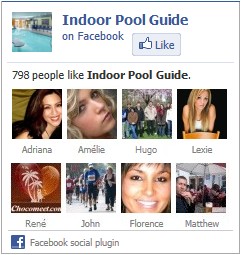Pool water balance is a term that describes the scale or corrosion activity of pool water. These aspects must be controlled while remaining within correct pH for disinfection efficacy and bather comfort. Water balance is affected by four factors: – pH – Total alkalinity – Calcium hardness – Temperature. These factors are discussed individually below. […]
Monthly Archives: March 2012
Overview Ultraviolet radiation water treatment systems are different from the other methods discussed because they purify the pool water as it passes through the plant room. Both deal with water contaminants without providing a disinfectant residual, and allow the water in the pool itself to operate with a lower level of conventional residual disinfectant than […]
Overview Ozone water treatment systems are different from the other methods discussed because they purify the pool water as it passes through the plant room. Both deal with water contaminants without providing a disinfectant residual, and allow the water in the pool itself to operate with a lower level of conventional residual disinfectant than it […]
Chloramine Removal Chloramines are formed by a reaction between hypochlorous acid and nitrogen based products from pool users. Chloramines can be reduced by a number of processes. Superchlorination/shock dosing, ozonation and dilution are three conventional methods of chloramine reduction. Continuous dilution is the best way to minimise the build-up of combined chlorine, particularly the stable […]
Water disinfection solutions Disinfection occurs when sanitation of the pool water is achieved. This means that transmission of infections between persons or from the pool is minimised and that growth of algae and other nuisance organisms is inhibited. Chlorine and Bromine Based Disinfectants Disinfectants need to kill bacteria very quickly, and free chlorine or bromine […]
Overview Good pool water management and adequate hygiene procedures will prevent pollution and cross-contamination in most cases. This article concentrates on cleanliness and hygiene in the pool surrounds and in the pool itself. Public Education Swimmers need to understand the importance to them of pre-swim hygiene; it helps provide more comfortable water. Posters, pool rule […]
Emergency Procedures Exposure of Pool Water to Faecal Matter The treatment required will depend upon the condition of the faecal matter introduced. Loose faecal matter (diarrhoea) requires greater treatment than a firm stool, as it is more likely to contain a large number of microorganisms, will spread rapidly over a large area and is not […]
Pool Water Contamination Overview Swimming pools present no special infection risk, provided they are properly managed and disinfected. Pool users are the primary cause of contamination. Therefore, management of their numbers, according to maintenance capabilities, is necessary. Overcrowding in the pool, in change rooms and at the poolside is to be avoided. Sensible hygiene rules, […]
Swimming Pool Design Overview Pools are complicated structures and make serious demands on design, construction, operation and maintenance. One should be principally concerned with operation; however, design and construction are critical to successful operation. Design is the first issue to be considered for new and existing structures and should be addressed in collaboration with all […]
Quantities of chemical The Dangerous Goods (Storage and Handling) Regulations outlines the quantities of chemicals stored that trigger the enforcement of placcarding and manifest requirements. The prescribed quantities may depend on the packaging class. How Close Together Should Chemicals be Stored? Separation Distances Many chemicals can be dangerous if stored too close to other dangerous […]

